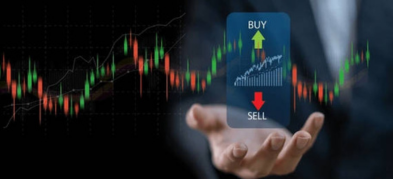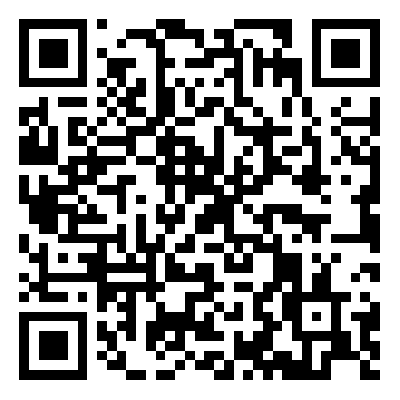
Ultima Markets App
Trade Anytime, Anywhere
Important Information
This website is managed by Ultima Markets’ international entities, and it’s important to emphasise that they are not subject to regulation by the FCA in the UK. Therefore, you must understand that you will not have the FCA’s protection when investing through this website – for example:
- You will not be guaranteed Negative Balance Protection
- You will not be protected by FCA’s leverage restrictions
- You will not have the right to settle disputes via the Financial Ombudsman Service (FOS)
- You will not be protected by Financial Services Compensation Scheme (FSCS)
- Any monies deposited will not be afforded the protection required under the FCA Client Assets Sourcebook. The level of protection for your funds will be determined by the regulations of the relevant local regulator.
Note: Ultima Markets is currently developing a dedicated website for UK clients and expects to onboard UK clients under FCA regulations in 2026.
If you would like to proceed and visit this website, you acknowledge and confirm the following:
- 1.The website is owned by Ultima Markets’ international entities and not by Ultima Markets UK Ltd, which is regulated by the FCA.
- 2.Ultima Markets Limited, or any of the Ultima Markets international entities, are neither based in the UK nor licensed by the FCA.
- 3.You are accessing the website at your own initiative and have not been solicited by Ultima Markets Limited in any way.
- 4.Investing through this website does not grant you the protections provided by the FCA.
- 5.Should you choose to invest through this website or with any of the international Ultima Markets entities, you will be subject to the rules and regulations of the relevant international regulatory authorities, not the FCA.
Ultima Markets wants to make it clear that we are duly licensed and authorised to offer the services and financial derivative products listed on our website. Individuals accessing this website and registering a trading account do so entirely of their own volition and without prior solicitation.
By confirming your decision to proceed with entering the website, you hereby affirm that this decision was solely initiated by you, and no solicitation has been made by any Ultima Markets entity.
I confirm my intention to proceed and enter this website Please direct me to the website operated by Ultima Markets , regulated by the FCA in the United KingdomWhat’s the US Stock Market Opening Hours (Taiwan Time)?
Due to the time difference between the US and Taiwan, along with daylight saving time transitions, investors often confuse trading start times when participating in US stocks.
This article will comprehensively analyze the US stock market opening hours in Taiwan time, explain the time difference conversion logic, and guide you on how to seize market volatility at the right time to enhance trading efficiency.
How to Calculate US Stock Market Opening Hours in Taiwan Time?
The US stock market operates from 9:30 AM to 4:00 PM ET. Converted to Taiwan Time, standard time 10:30 PM to 5:00 AM, daylight saving time (DST) 9:30 PM to 4:00 AM
Traders must adjust schedules annually during March and November DST transitions.
Daylight Saving Time (DST) vs. Standard Time Differences
The US transitions to DST on the second Sunday of March, advancing US market hours by 1 hour in Taiwan Time. DST ends on the first Sunday of November, reverting to Standard Time.
These time shifts critically impact cross-time-zone investors. Neglecting schedule adjustments may result in missed critical market openings.

US Stock Market Different Trading Sessions Corresponding Taiwan Time
To help you keep track, here is a concise reference table:
| US Market Session | Taiwan Time (Standard Time) | Taiwan Time (Daylight Saving Time) |
| Regular Opening | 22:30 | 21:30 |
| Closing | 05:00 (Next Day) | 04:00 (Next Day) |
| Pre-market Trading | 17:00~22:30 | 16:00~21:30 |
| After-hours Trading | 05:00~09:00 | 04:00~08:00 |
The US pre-market trading time in Taiwan is crucial for those who want to position early in the market, while the after-hours trading time provides flexibility for extended operations, especially suitable for adjusting positions after major earnings announcements.
What time is the US stock market most active in Taiwan?
The most active period in the market is usually the first two hours after the opening. Whether it is technology stocks or energy stocks, the liquidity and volatility are higher during the initial opening period.
Especially when the Taiwan time falls in the late-night hours, using UM’s mobile platform can help investors keep track of the market at any time.
What Are the Advantages of Trading US Stocks on UM?
Ultima Markets eliminates time zone barriers through trading account activation, enabling seamless global market access. The platform offers diverse trading tools, real-time intraday quotes, and customizable leverage settings to optimize opportunity capture.

Why Master Taiwan Time Opening Hours?
Critical earnings reports and economic data often release pre-market or intraday. Failure to account for the Taiwan-US time differential may result in missed position adjustments.
For instance, Apple Inc.’s 2023 product launch triggered significant price volatility within two hours of market open, demonstrating the strategic weight of opening sessions.
How to Avoid Missing Critical Opening Sessions?
Set manual alerts or activate UM platform’s automated notifications. Practice with demo accounts to master opening price action dynamics and refine risk-free trading decisions for enhanced live execution efficiency.
2025 US Stock Market Opening Hours (Taiwan Time Update)
According to the 2025 Daylight Saving Time Plan, the US will switch to Daylight Saving Time on March 9th and return to Winter Time on November 2nd.
Investors must pre-adjust time zone settings. MT4/MT5 users should manually verify trading hours to prevent candlestick charts and opening price misinterpretations.

FAQs
Q1: What is the US stock market opening time in Taiwan Time?
A: The converted ET-to-Taiwan Time opening: 22:30 (Standard Time) / 21:30 (DST).
Q2: How do Daylight Saving Time transitions work?
A: DST starts on the second Sunday of March and ends on the first Sunday of November, shifting Taiwan Time by ±1 hour.
Q3: What is the best time to buy?
A: Prioritize the first two post-open hours for high liquidity and concentrated opportunities, especially during earnings/FOMC events requiring volatility monitoring.
Q4: Does UM offer opening session alerts?
A: Yes. Configure price alerts, calendar notifications, or rehearse strategies via UM demo accounts.
Q5: Can I trade exclusively in pre/after-hours?
A: Yes. UM supports extended CFD/equity sessions, delivering full pre-post market access for varied trading styles.

Conclusion: Master Timing to Master Trading
Precisely tracking US market hours in Taiwan Time is foundational for trading efficiency. From pre-market positioning to post-session adjustments, every trading window holds strategic significance.
Leverage the Ultima Markets platform with demo rehearsals and real-time market intelligence to transcend time zone constraints and command global market movements with precision.
Disclaimer: This content is provided for informational purposes only and does not constitute, and should not be construed as, financial, investment, or other professional advice. No statement or opinion contained here in should be considered a recommendation by Ultima Markets or the author regarding any specific investment product, strategy, or transaction. Readers are advised not to rely solely on this material when making investment decisions and should seek independent advice where appropriate.












